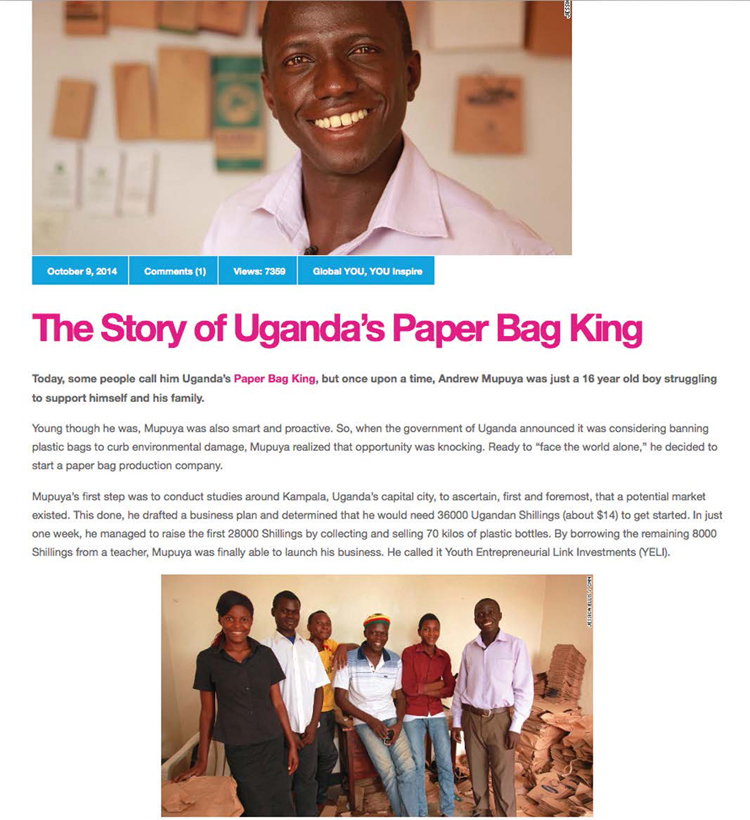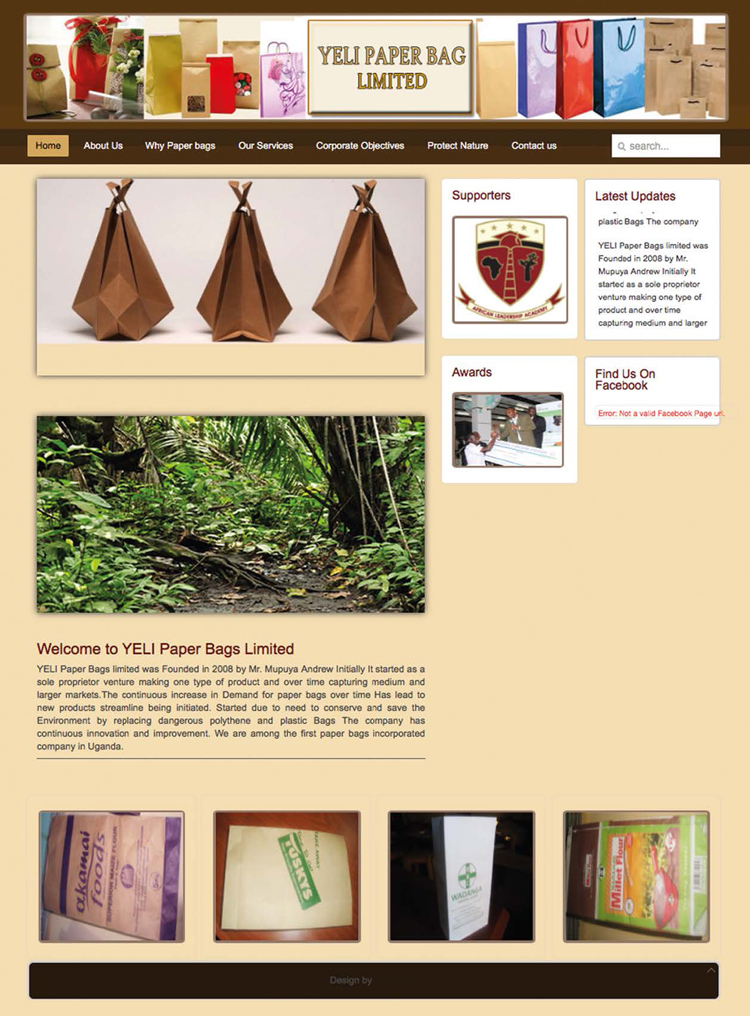We Europeans often think we are at the forefront with regard to environmental protection. We can show the world how to look after nature and how to reduce waste. More importantly, we can teach the backward populations of less advanced countries what we can do. Well, if you are one of those thinking along these lines, perhaps you should give up such prejudices and convictions, because they are unfounded. The issue of plastic carrier bags, where Europeans have a lot to learn from what has been done in Africa, including their mistakes, is a good case in point.
Shopping bags are very popular and practical items, but they are so widespread that they have become a threat for the environment and for us human beings: they can last for centuries, they represent a danger for animals and nature, they generate large flows of greenhouse gases and they are difficult to dispose of. In Italy, we realized this, so much so that since 2011 we are one of the very few European countries that has banned non biodegradable plastic carrier bags (although, unfortunately, the illegal trade of plastic bags is still continuing). Other European countries, instead, went down the path of economic sanctions, introducing tax or additional charges. As a result, plastic bags are still legally used and therefore create problems.
However, Africans have proved a lot braver: here, as many as twentyseven countries have enacted partial or total bans of plastic carrier bags, as well as tax and penalties. The government with the strictest and better enacted laws is Rwanda. Viceversa, in other countries bans are dodged or not obeyed, such as Mauritania or South Africa. But there is no shortage of virtuous examples: new small and medium enterprises start to crop up, committed to the production of biodegradable plastic bags or derived from non polluting materials and the use of the illegal ones start to diminuish.
The level of damage plastic carrier bags can represent cannot be emphasized enough. Practical, light, hygienic, cheap, hefty and reusable, but at the same time, very difficult to destroy. Because traditional plastic carrier bags are made of high density polyethylene (HDPE), a non biodegradable substance which, if kept in an anaerobic environment (for example at the bottom of a landfill) can last for thousands of years. So, it ends up in our seas, in the horrible “garbage patches” mainly made of plastic floating in our oceans. Going through the branches of the food chain, carrier bags and other plastic materials not only poison marine animals and birds, but also humans. All toxic additives contained in a shopping bag – antiflame and antimicrobial substaces and many more – are released into the environment. According to the WWF, every year, at least one hundred thousand whales, seals and turtles die because they bumped into some sort of plastic along their way. On land, carrier bags take their toll on sheep because they mistake them for flowers, when they get stuck amongst trees or bushes; in Mauritania, for instance, they are responsible for 70% of deaths of grazing animals.
Not only that: plastic bags create big problems to infrastructure, starting from canals, water treatment and sewage systems, often completely clogged by these almost indestructable objects. An even more serious problem in developing countries, where sewers are less modern and efficient and where stagnant waters can create serious health problems because of the presence of insects and parasites.
It goes without saying that when talking about Africa we should not expect neither civic sense by citizens nor administrative efficiency by the various institutions, as opposed to, for example, Scandinavian countries. In these countries, citizens have such low incomes that they cannot afford neither to pay discouraging fines, nor the purchase of alternative and non polluting bags which have a much higher cost. The fact that in these countries retailers often sell their goods in small quantities and unpackaged is certainly no help, because they invariably use plastic carrier bags. How can we forget that the so called “informal sector” – i.e. illegal or black market trade, which by definition is a large consumer of plastic and goes unchecked by authorities – has represented over 80% of the economy. Again, it is understandable that in many cases, monitoring authorities have not got many means and perhaps bigger fish to fry.
Lastly, we should remember that, in many African countries, this “war” is further complicated by the fact that in theory potable water is sold in plastic bags, because of the lack of aqueducts and fountains able to distribute water in a correct way. A very serious problem for public health, since quite apart from possible water contamination – in many cases it is not drinkable and source of various diseases – the thin polyethylene of carrier bags deteriorates when exposed to the sun, releasing particles of the material into the liquid.
Taking Stock
This was a preliminary and necessary observation, in order to judge the effectiveness – occasionally very good and sometimes very modest – of the policies against plastic carrier bags.
As mentioned before, the first African country to take action against plastic was Rwanda, which already in 2004 introduced the first dissuasive measure in order to reach its total ban in 2008 (introducing tax incentives to encourage companies to recycle). Eritrea followed suit, banning carrier bags in 2005, followed by Kenya, which after failing to ban them in 2007, in 2011 started a less ambitious and more limited plan. A national ban was declared in Tanzania in 2006: the sale or the import of thin carrier bags can cost the equivalent of $2,000 in fines and a six month jail sentence. In 2007, in Botswana, a tax payable by consumers has been introduced which discouraged the use of plastic. In South Africa, a similar policy to Uganda has been put in place: thinner plastic bags – which were locally called “national flowers” because they were so widespread in the fields – have been banned, while the heftier ones have been taxed. After so many years, though, the balance is still negative. Very few abide by the ban to use thin plastic bags; the six cent of a rand tax has never been – as previously agreed – allocated to recycling and recovery of plastic and on the whole the law only managed to reduce only by one third (from 12 to 8 billion every year) the number of plastic bags used in countries. In April 2015, Senegal too approved unanimously a law banning production, import, possession and use of plastic carrier bags; Gambia did exactly the same in West Africa. Guinea-Bissau, Mali (since 2013), Gabon (since 2010), Ethiopia (since November 2011) and Malawi passed similar laws to contain the use of shopping bags. In Mali, MPs voted unanimously in favour of a law that since April 2013 has banned production and commercialization of all non biodegradable plastics. Last but not least, Morocco, since July 2016 banned production, import, sale and use of plastic bags (called mika), apart from those used in agriculture, industry and waste collection.
All this did not happen without protests. In the Ivory Coast, where the use of plastic for potable water has been banned, and especially in the capital Abidjan, such ban has brought many small enterprises down to their knees. They bag and sell bad quality and of dubious origin water. Street demonstrations caused friction between the police and protesters. In Mauritania, in January 2013, production, use, import of plastic bags was banned: on paper, those producing bags in this large and depopulated Sahel country can be punished with a one year jail sentence or incur in a fine up to €2,500 (a fortune). However, here too, according to local newspapers, so far, the population, despite seemingly in favour of the new laws, in practice dodged it. It very often happens that there are no real alternatives to the use of plastic bags, commonly known as zazous. According to some estimates, every Mauritanian uses seven zazous per day, a number that seems to have gone slightly down, but the replacement with paper bags or other material has not moved forward. A stroll down the streets of Nouakchott, the city capital, is enough to confirm this: bags are scattered everywhere, both in the streets and used for waste collection.
In 2007, Uganda passed a law banning the sale of thinner plastic bags, those under 30 micron of thickness. However, according to many observers, the ban is not actually obeyed and the decrease in the use of carrier bags – here they are called kaveera – has been very limited. The ban, in force since 2010, has substantially been a theoretical one and entrepreneurs operating in the sector have been promised to be involved in the recovery and recycling activities of the theoretically illegal carrier bags. Then, after the widespread failure of the program, measures have toughened up against kaveera producers: 20 factories had to shut down and periodically, the environmental agency, Nema, carries out raids and confiscation of illegal carrier bags that seem to come from neighbouring Kenya. According to data from the same environmental agency, every year, almost 39,000 tonnes of carrier bags are scattered in the environment ending up in fields and in manure, often used as fuel in poorer areas. The government spends 10 million Ugandan shillings (approximately €2.5 million) to free up sewers in Kampala from bags. With some effort, though, in Uganda, new entrepreneurs are emerging, seizing the opportunity of the ban on plastic carrier bags to start their own enterprise. This is the case of Andrew Mupuya, now only 24, who, by selling 70 kg of empty plastic bottles that had collected and after having borrowed the equivalent of three dollars from his teacher, he put together US$14, necessary to start up a paper bag “factory”, which he learnt how to make by looking at a video on YouTube. Today, his company, called Yeli, employs 20 people and produces 20,000 paper bags every week for restaurants and supermarkets in the capital.
|
|
|
Andrew Mupuya
|
In Rwanda, illegal trafficking is a serious problem. Here, illegal carrier bags come from the Democratic Republic of the Congo, that despite having banned trade, import and use of plastic carrier bags in 2012, it allowes their production with the authorization of the Ministry of Industry. Traffickers are women – the so called coracora – hiding between 50 to 100 bags under their garments, eluding body search and heavy fines: up to 300,000 Rwandan francs (431 dollars) for those selling them, up to 100,000 ($143) for those using them. Sometimes, those caught by border guards can be beaten up. Dodging the laws is not that difficult after all, but visually the difference is striking: on the Congo side of the border, towards the city of Goma, streets and fields are studded with ripped plastic bags, on the Rwandan side, towards the city of Gisenyi, there are almost no traces of plastic in fields or streets.
In Cameroon, a consumer asking a plastic bag must pay a tax of 100 CFA Francs, or €0.15: a very heavy tax. However, even in Cameroon it is quite easy to elude the law; for now the ban has only resulted in the price of illegal plastic bags to have soared by three or four times. In this case, they come from Nigeria and are quite expensive: $5 for a 100 pack. The government expected distributors and retailers – as it had happened long time before in Italy – to stock up bags until they were still legal and then re-sell them at a higher price once the ban would be implemented. So far, only supermarkets, bakeries and chemists’ truly respect the law offering (charging the unhappy customers) paper bags. There is some talk about the introduction of a draconian law: a fine worth the equivalent of $30 (as an alternative to a few weeks in jail) for anyone caught with a plastic bag.





